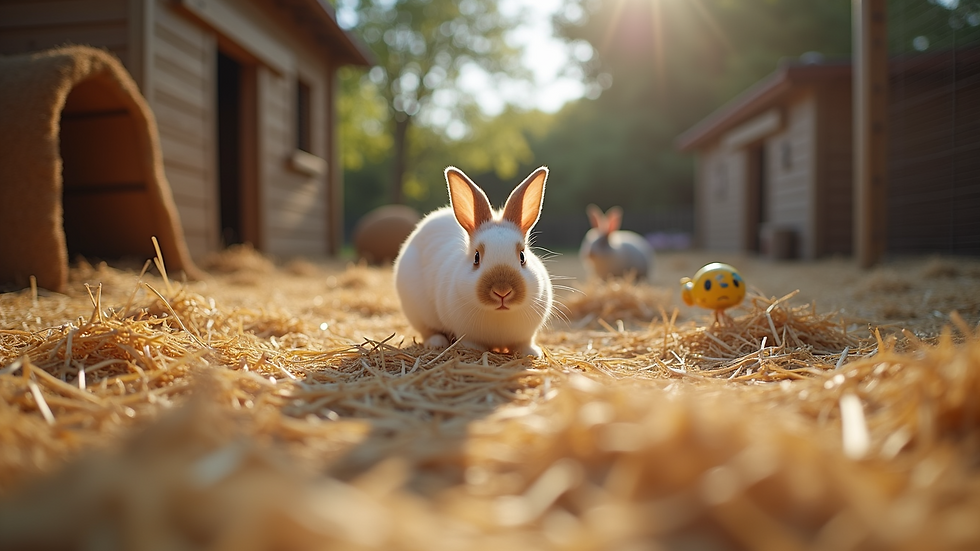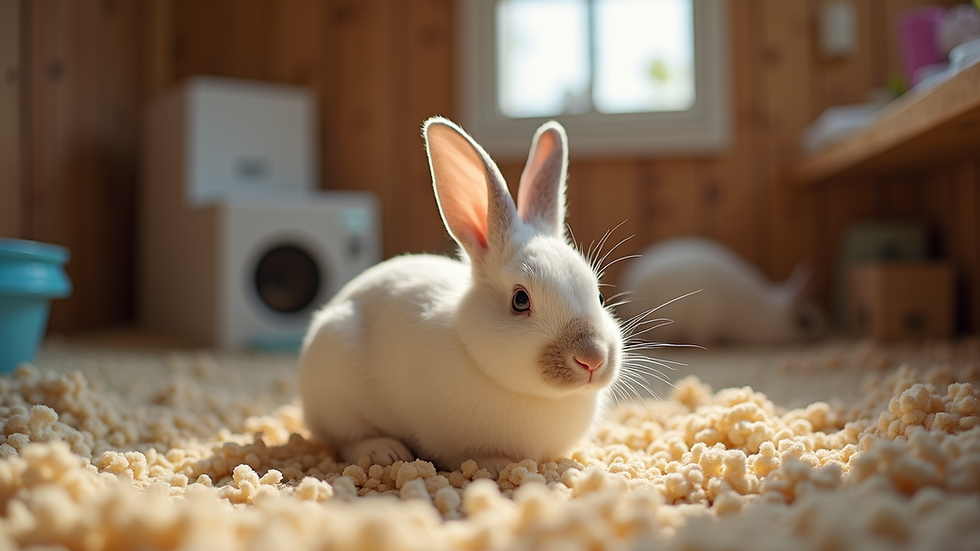How to Keep Your Pet Rabbit Happy
- silviya9
- Oct 20
- 3 min read
Rabbits are delightful companions that bring joy and warmth to any home. However, keeping a rabbit happy and healthy requires understanding their unique needs. From diet to environment, every aspect of rabbit care plays a crucial role in their well-being. This guide will walk you through practical and effective rabbit care tips to ensure your furry friend thrives.
Understanding Your Rabbit’s Needs: Rabbit Care Tips
Rabbits are social, intelligent animals that need more than just food and shelter. They require mental stimulation, physical activity, and a safe environment to feel secure and content. Here are some essential rabbit care tips to keep in mind:
Provide a spacious living area: Rabbits need room to hop, stretch, and explore. A cage or hutch should be large enough for your rabbit to move freely and stand on its hind legs.
Offer a balanced diet: Fresh hay should be the main part of their diet, supplemented with leafy greens and a small amount of pellets.
Ensure fresh water availability: Change water daily and use a clean bowl or bottle.
Create a safe environment: Protect your rabbit from predators and extreme weather if kept outdoors.
Social interaction: Rabbits are social creatures and benefit from companionship, either from humans or other rabbits.
By following these tips, you can create a nurturing environment that supports your rabbit’s physical and emotional health.

Enriching Your Rabbit’s Environment
A stimulating environment is key to preventing boredom and destructive behavior in rabbits. Here are some ways to enrich your rabbit’s daily life:
Toys and Chewables: Provide safe chew toys made from untreated wood or cardboard to satisfy their natural chewing instinct.
Hideouts and Tunnels: Rabbits love to hide and explore. Cardboard boxes or commercially available tunnels offer great fun.
Exercise Time: Allow your rabbit supervised time outside the cage to hop around and explore a rabbit-proofed room or garden.
Grooming: Regular brushing helps keep their coat clean and reduces hairballs.
These activities not only keep your rabbit physically active but also mentally engaged, contributing to a happy rabbit.

What was Bugs Bunny's original name?
Before Bugs Bunny became the iconic character we know today, he went through several iterations and names. The character first appeared in the late 1930s and early 1940s under different names such as "Happy Rabbit" and "Bugs' Bunny." The name "Happy Rabbit" was used in early cartoons, reflecting the character’s cheerful and mischievous personality. Eventually, the name Bugs Bunny stuck, inspired by animator Ben "Bugs" Hardaway, who played a significant role in the character’s development.
Understanding this history adds a fun layer to appreciating rabbits, both real and animated, and highlights how rabbits have long been beloved figures in popular culture.

Feeding Your Rabbit: What to Know
Proper nutrition is fundamental to your rabbit’s health. Here are some detailed feeding guidelines:
Hay: Unlimited access to fresh hay is crucial. Timothy hay is a popular choice for adult rabbits, while alfalfa hay is better for young rabbits due to its higher calcium content.
Fresh Vegetables: Introduce leafy greens like romaine lettuce, cilantro, and parsley gradually. Avoid iceberg lettuce as it has little nutritional value.
Pellets: Feed high-quality rabbit pellets in moderation. Avoid mixes with seeds or dried fruit.
Treats: Offer fruits like apple slices or berries sparingly due to sugar content.
Avoid Toxic Foods: Never feed rabbits chocolate, onions, garlic, or processed human foods.
Always monitor your rabbit’s eating habits and consult a vet if you notice any changes in appetite or digestion.
Health and Hygiene: Keeping Your Rabbit in Top Shape
Regular health checks and hygiene practices are essential for a happy and healthy rabbit:
Check teeth regularly: Rabbit teeth grow continuously and can cause problems if not worn down properly.
Nail trimming: Keep nails short to prevent injury.
Clean living space: Remove soiled bedding daily and disinfect the enclosure weekly.
Monitor behavior: Changes in activity, eating, or bathroom habits can indicate health issues.
Vet visits: Schedule annual check-ups and vaccinations as recommended.
By maintaining good hygiene and health routines, you can prevent many common rabbit ailments.
Final Thoughts on Rabbit Care
Caring for a rabbit is a rewarding experience that requires commitment and knowledge. By providing a spacious, enriched environment, a balanced diet, and regular health care, you can ensure your pet lives a long, joyful life. Remember, a happy rabbit is one that feels safe, loved, and stimulated every day. Whether you are a new rabbit owner or looking to improve your care routine, these tips will help you build a strong bond with your furry friend.
Taking the time to understand and meet your rabbit’s needs will not only enhance their quality of life but also deepen the special connection you share.




Comments